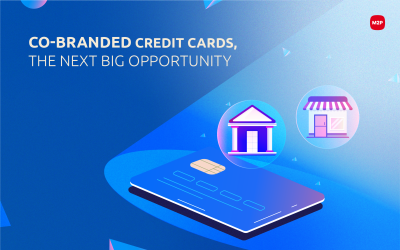
Enhancing customer experience is imperative for any business. Even if the products and services are feature-rich, they can still be undervalued if the interface is boring and navigation inefficient. Poorly designed interfaces can lead to poor customer experiences that result in increased overhead costs and customer attrition. Whether you are in the B2B or B2C space, boosting customer experience, cutting cost and minimizing churn is crucial for survival.
To drive customer loyalty, boost revenue, and maximize value proposition, great Experience Design (XDE) is vital.
But how can you implement XDE without compromising security and compliance?
We got expert help here.
Catch Mahalakshmi, our Experience Design Lead, share her perspectives on how smart design thinking and a customer-centric approach can enhance user experience. Drawing from her experience, she implores deep into the compelling need for XDE in B2B space.
Breaking complexities
Most of us have had frustrating experiences with mobile or web-based applications. One classic example is the company-mandated software we use to make expense claims. Imagine the last time you went on an HR portal to make an expense claim. The maze of forms, confusing terms and unnecessary steps makes you want to give up on even hoping for a refund. The next time you think about reimbursement, it feels like it’d be easier to spend your own money or give up on the expense altogether.
B2B applications such as these have the potential to deliver huge value but are difficult to unlock. In simple terms, they are feature rich but complicated to use. Most B2B products are notorious for lousy user experience (UX) and lack customer support, even for common tasks. Though B2C products started out the same way back in the nineties, today their designs are more customer-centric, evolved, and matured.
To break the complexities in the B2B design, the focus needs to shift towards “Experience Design” from just providing pure tech solutions.
Offering a reasonably good user experience is now a basic necessity and not a luxury anymore.
What is experience design?
Experience design is the process of crafting products, services, and interactions that create enhanced experiences for users. The design should focus on solving customer problems, eliciting positive emotions, and driving repeated usage and references.
Why B2B companies lag behind in XDE ?
Most B2B products have still not prioritized experience design. Some of them were built when the internet was in its infancy, and the technology required to provide rich experiences was non-existent.
In the race to acquire customers, more focus is often given to features over experience during product development. To deliver quick go-to-market speed, product teams usually develop and code without a concrete experience design in hand. In most common cases, product teams are fully comprised of engineers and technology lovers and the product is solely built by them. Their focus is to ensure that the product provides many features and is functionally reliable.
In cases where product teams try to understand user needs, usually, they tend to believe in “we know our customers” and rely on good intentions to set the direction for the product. The gut feeling makes some product teams skip user research, thus failing to dig deeper into user needs and goals.
This happens due to a common misbelief that bringing UX to development adds time, effort, and resources to budgets. Other challenges B2B companies often face are getting access to users, the right resources, or acquiring the required data.
Do B2B companies not care about UX at all?
Of course, they do! The good thing is that most B2B companies care about offering a good product experience. But tend to stay away from focusing on UX because of the above reasons. These days very few companies seem to not have overlooked the value of UX. However, even when companies are partially convinced about the need for good design, they don’t practice it actively or tend to procrastinate.
Need to prioritize experience design
Prioritizing experience design is now more important than ever, as business (B2B) buyers are also everyday users of consumer (B2C) digital products that, as a general rule, deliver a great experience. From the perspective of user expectations, the lines between B2B and B2C are getting increasingly blurry.
Users spend an average of 6 hours daily online, constantly surfing the web and making decisions using consumer websites or mobile applications. This gives them the opportunity to compare any design with other services. Thus, even an average user is accustomed to high levels of experience, and this leaves them in a position to judge UX critically.
Products with bad user interfaces and experience have difficulty meeting basic metrics like task experience, engagement, clarity, and satisfaction. The end result is loss of trust and loyalty, which takes a toll on brand value and is irreversible. Brands that earn a bad reputation find it very expensive to improve.
Experience design, a strategic investment
People who believe ‘XDE is expensive’ need to understand that including UX design in product development simply means a shift in investment that ultimately leads to more efficient project timelines. Through an upfront investment in prototyping solutions, testing them with users, and then iterating on the designs before development, a company can avoid expensive rework after the product is built.
Fasten development, satisfy users
A clearly defined UX process can speed up development by providing developers with well-defined and tested requirements and style guides. Rather than building and fixing a product, solutions can be created, rapidly tested, iterated upon and validated, and then developed with confidence.
Developers can work faster because they don’t have to guess what it should look like since all their deliverables are clearly illustrated and documented.
A well-designed product will undoubtedly result in higher user engagement, greater system efficiency, and satisfied customers.
Align business goals and user needs
UX designers should always strive to create a strategic user-centered design plan that enables them to understand and connect the overall strategy with the business goals and user needs while maintaining a positive balance between them. The plan should help establish active collaboration between cross-functional teams, a core requirement for any product to become successful.
Boost loyalty, engagement, and sales
User’s experience in business apps is as important as the value they deliver. The importance given to high-quality user experience (UX) is increasing exponentially, not just in the B2C context but in B2B as well. B2B companies find great user experience a powerful instrument to increase customer loyalty, engagement, and sales.
And good UX doesn’t happen by accident.
It is always a result of careful planning, diligent research, analysis, investment of time and money, and continuous improvement.
Want to know more about implementing UX in your products?
Write to us at business@m2pfintech.com
Subscribe to our newsletter and get the latest fintech news, views, and insights, directly to your inbox.
Follow us on LinkedIn and Twitter for insightful fintech tales curated for curious minds like you.




0 Comments